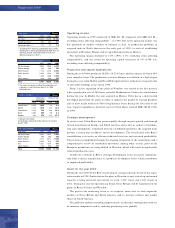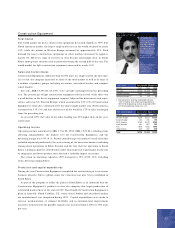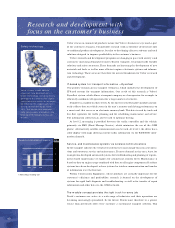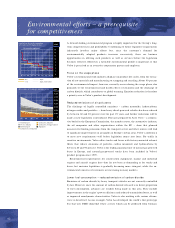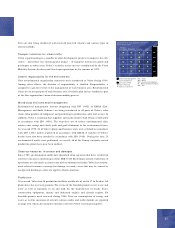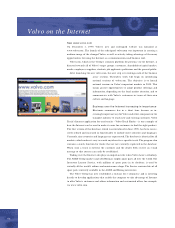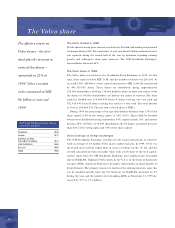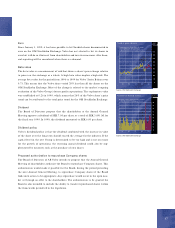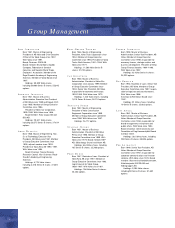Volvo 1999 Annual Report Download - page 44
Download and view the complete annual report
Please find page 44 of the 1999 Volvo annual report below. You can navigate through the pages in the report by either clicking on the pages listed below, or by using the keyword search tool below to find specific information within the annual report.
42
Environmental efforts – a prerequisite
for competitiveness
A forward-looking environmental program is highly important for the Group’s long-
term competitiveness and profitability. Conforming to future legislative requirements
inherently involves major efforts but, since the customer’s demand for
environmentally adapted products increases successively, there are business
opportunities in offering such products as well as services before the legislation
becomes effective. Moreover, a favorable environmental profile is important so that
Volvo is perceived as an attractive cooperation partner and employer.
Focus on the usage phase
Volvo’s environmental work includes all phases in product life cycles, from the extrac-
tion of raw materials and manufacturing to scrapping and recycling. About 90 percent
of the environmental impact, however, currently occurs during the usage phase, due
primarily to the environmental and health effects of emissions and the discharge of
carbon dioxide, which contributes to global warming. Emission reduction is therefore
a priority area in Volvo’s product development.
Reduced emissions of air pollutants
The discharge of legally controlled emissions – carbon monoxide, hydrocarbons,
nitrogen oxides and particles – from heavy diesel-powered vehicles has been reduced
by between 60 and 85 percent over the past 25 years, and further reductions will be
made as new legislation is introduced. Forecasts prepared by Auto Oil 2 – a coopera-
tive body for the European Commission, the member states, the automotive industry,
the oil companies and other organizations within the EU – show that planned
measures for limiting emissions from the transport sector and other sources will lead
to significant improvements in air quality in Europe’s urban areas. Volvo’s ambition is
to meet new requirements well before legislation comes into force. For traffic in
sensitive environments, Volvo offers trucks and buses with factory-mounted exhaust
filters that reduce emissions of particles, carbon monoxide and hydrocarbons by
between 80 and 90 percent. Volvo is the leading manufacturer of natural-gas powered
buses in Europe, and natural-gas-powered trucks have been included in Volvo’s
product program since 1999.
Environmental requirements for construction equipment, marine and industrial
engines and aircraft engines have thus far not been as demanding as for trucks and
buses, but emission legislation is gradually becoming more stringent, while the en-
vironmental concerns of customers are increasing in many markets.
Lower fuel consumption – reduced em ission of carbon dioxide
Emissions of carbon dioxide by heavy transport vehicles are not currently controlled
by law. However, since the amount of carbon dioxide released is in direct proportion
to fuel consumption, advances are steadily being made in this area. They include
improvements in the engine’s power efficiency and reduced transmission losses, as well
as improved aerodynamic characteristics. Volvo is also working with various alterna-
tives to diesel fuel. As one example, Volvo has developed the world’s first prototype
bus that uses DME (dimethyl ether) as fuel, which can be produced from biomass.
Legislative dem ands regarding
emissions of nitrogen oxides g/ kwh
16
14
12
10
8
6
4
2
0
Euro 1
Euro 2
Euro 3
Euro 4
USO4
US98
Japan
Japan, not decided
EU
U.S.
92 94 96 98 00 02 04 06 08 10
Heavy trucks and buses
Emissions of nitrogen oxides in EU k ton
14,000
12,000
10,000
8,000
6,000
4,000
2,000
0
90
Road transport
Process industry
Other transport
Combustion, non-industrial
Combustion, industrial
Combustion, energy production
Agriculture
95 00 05 10 15 20


